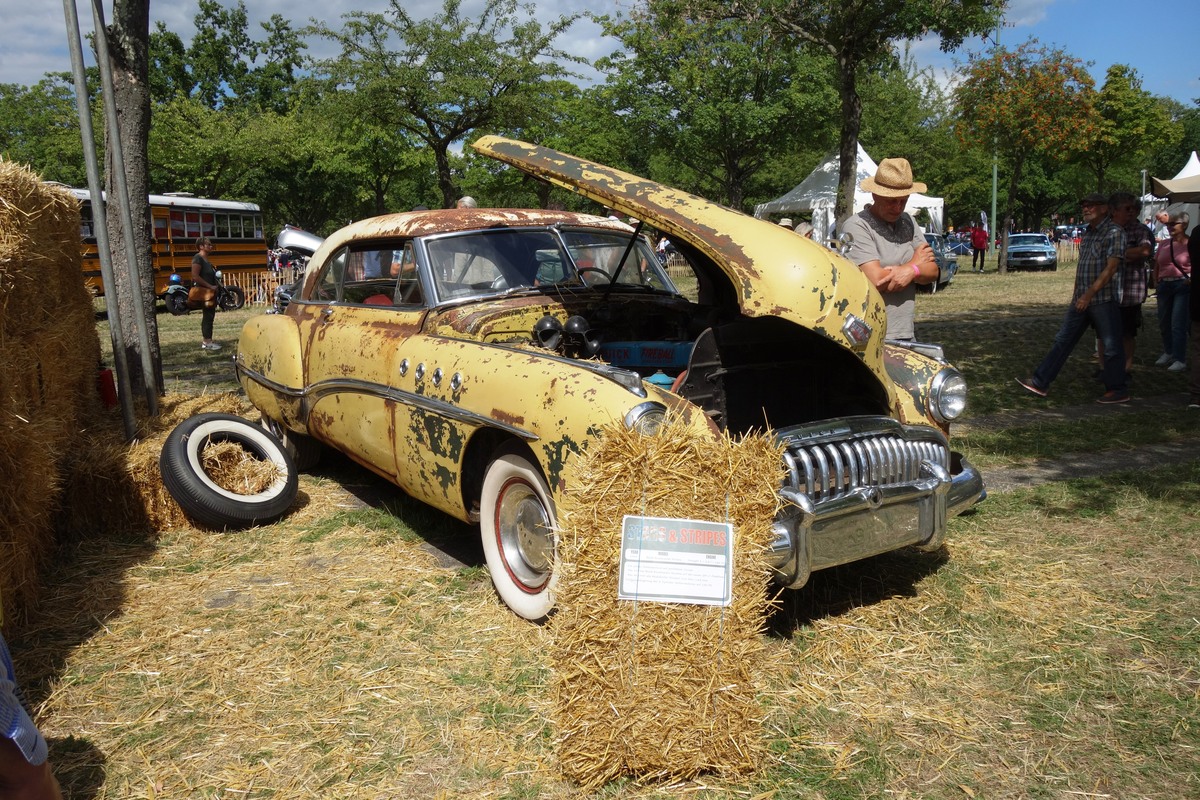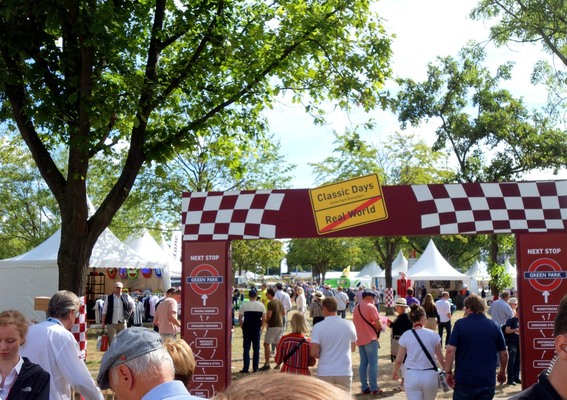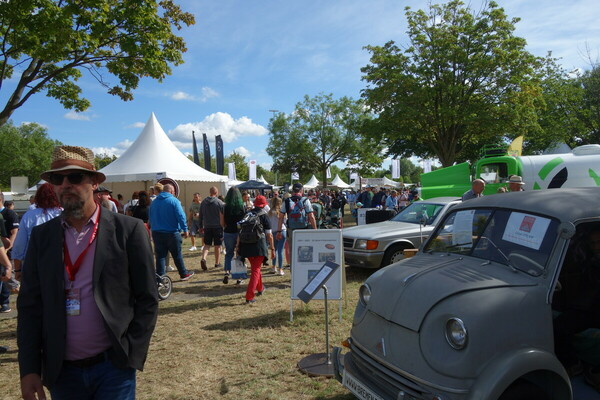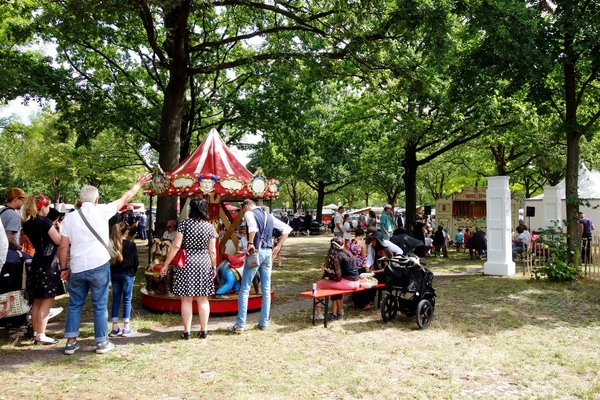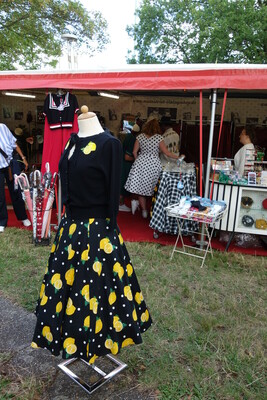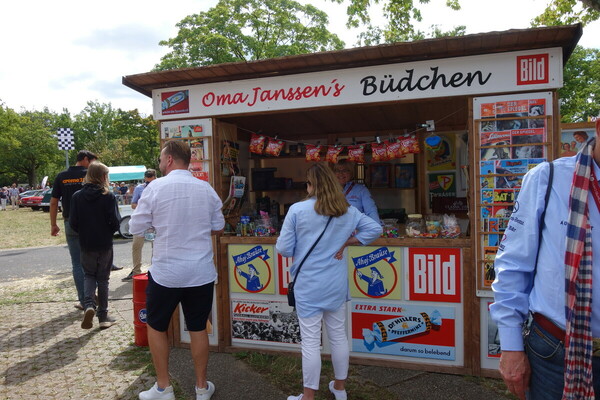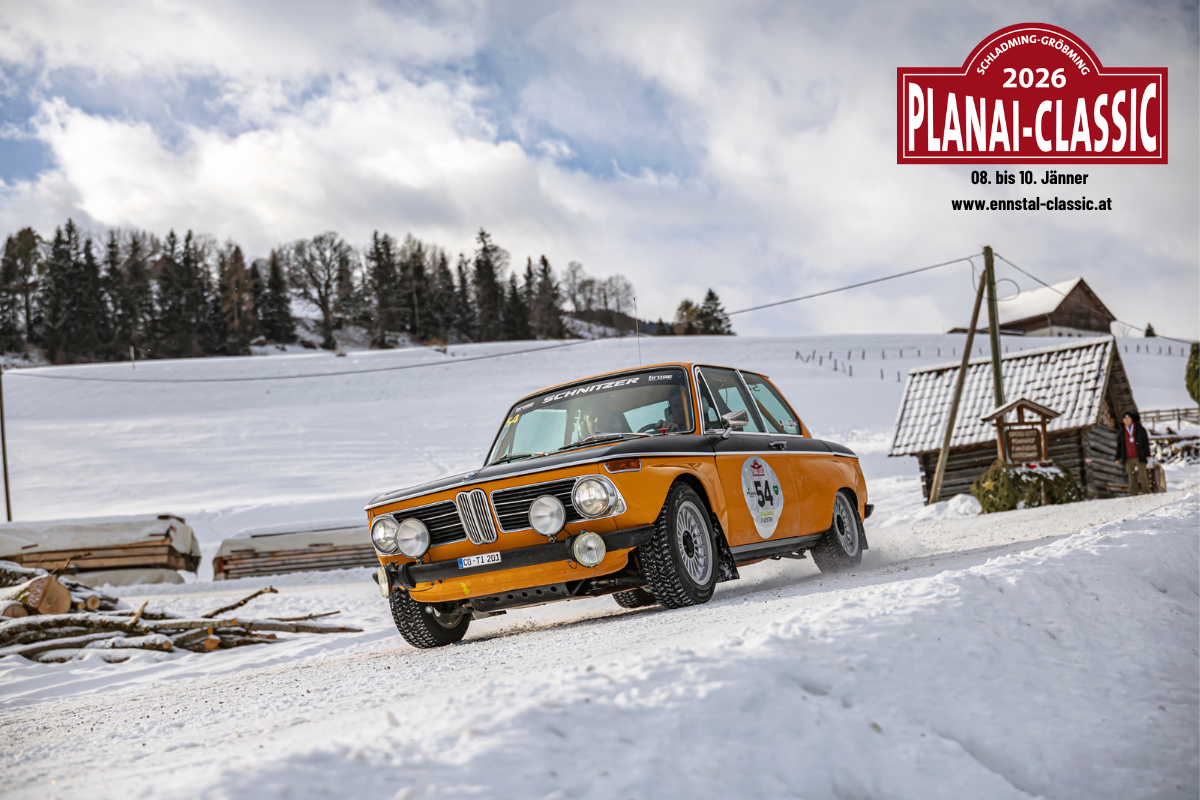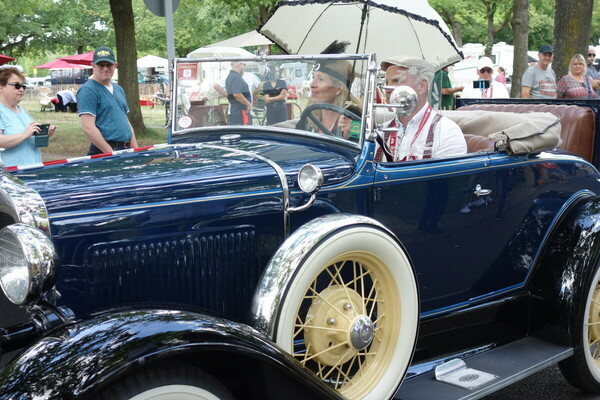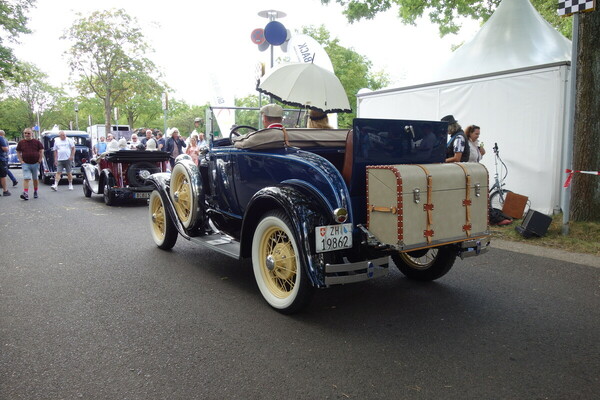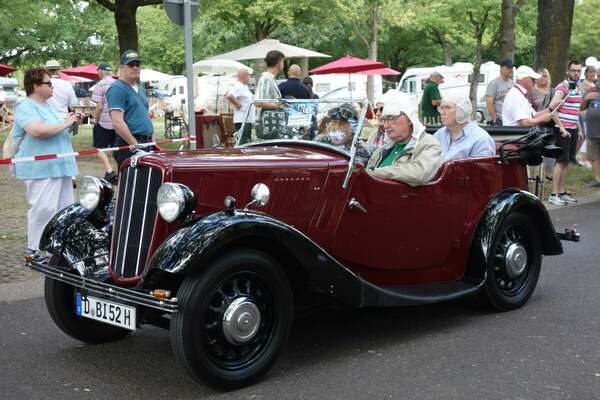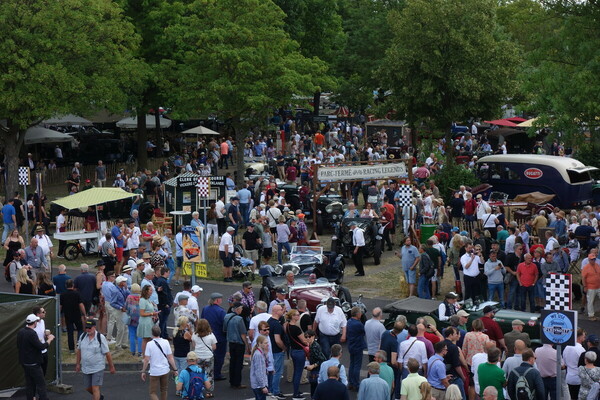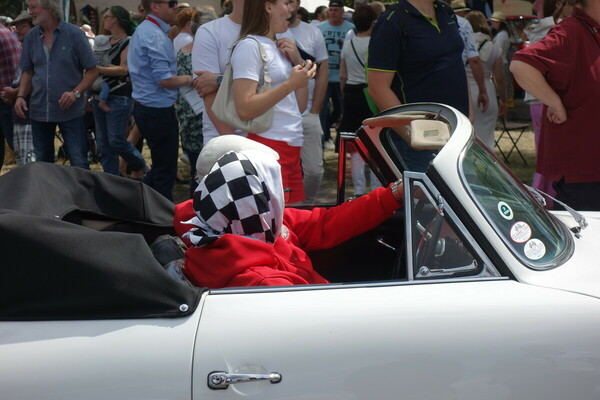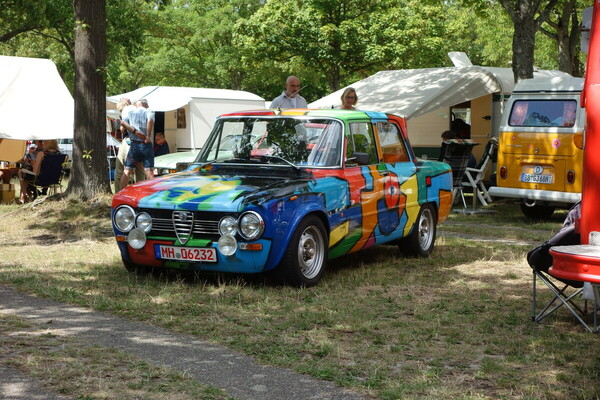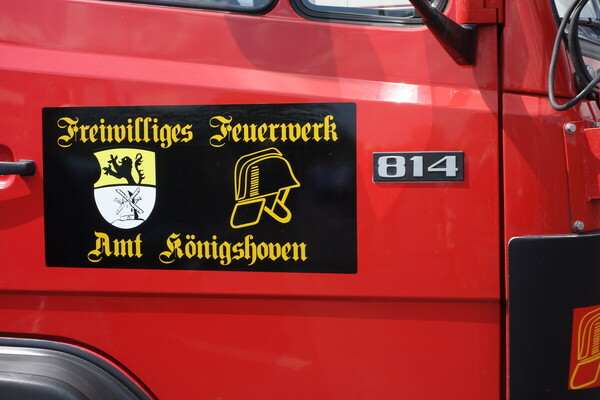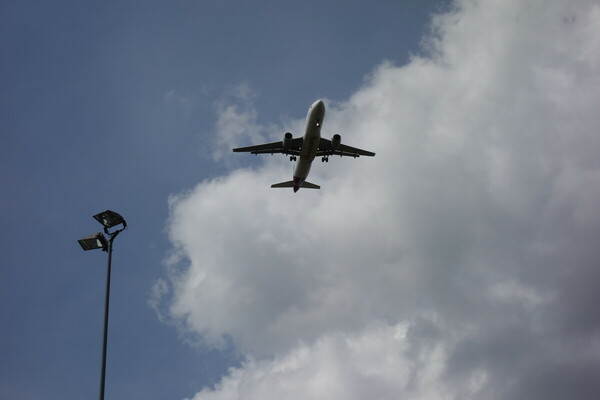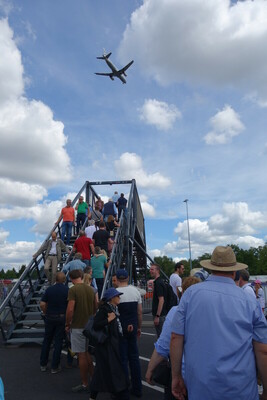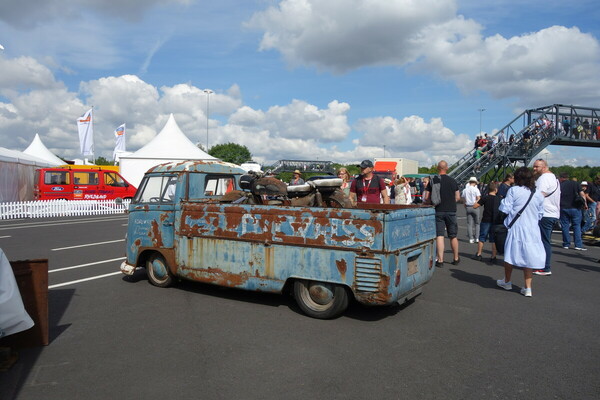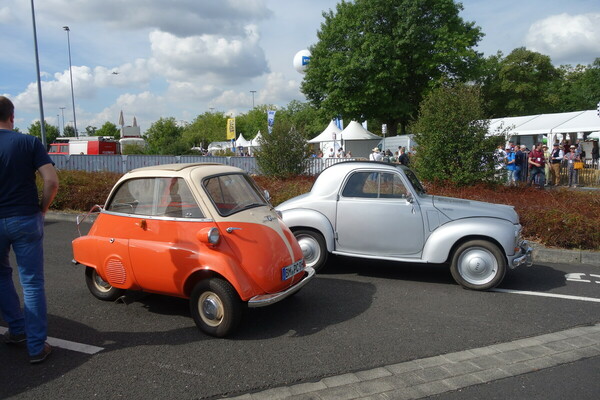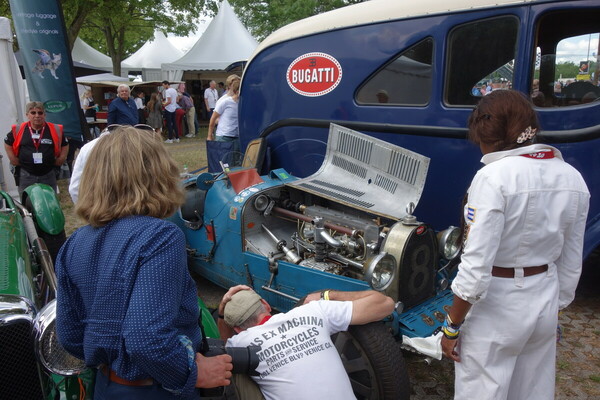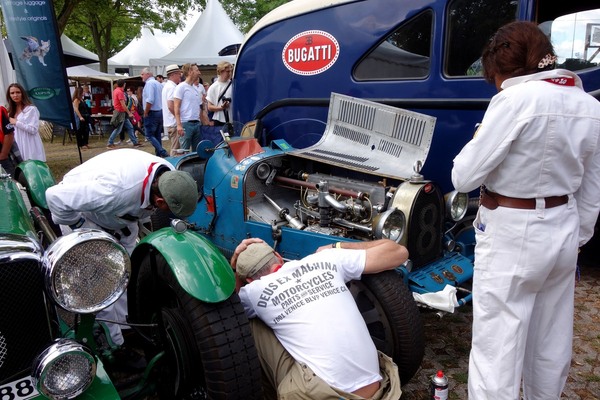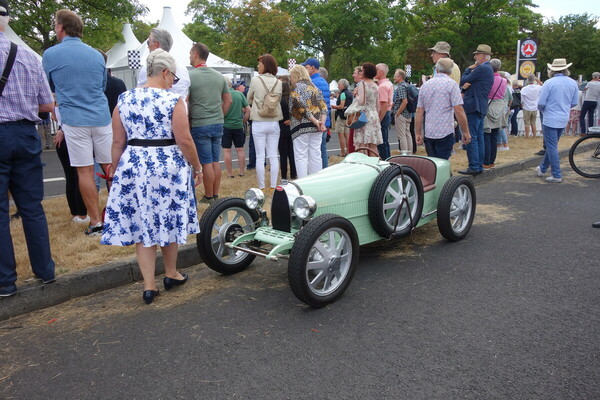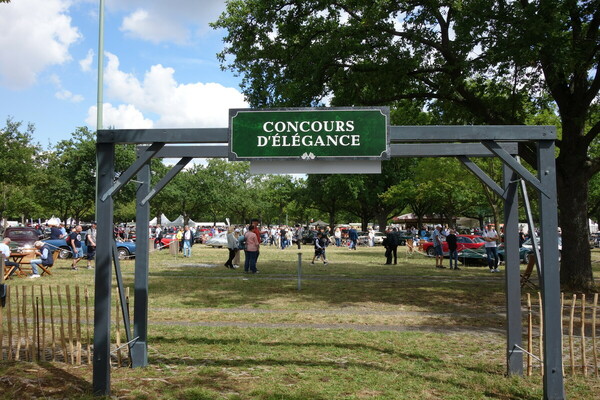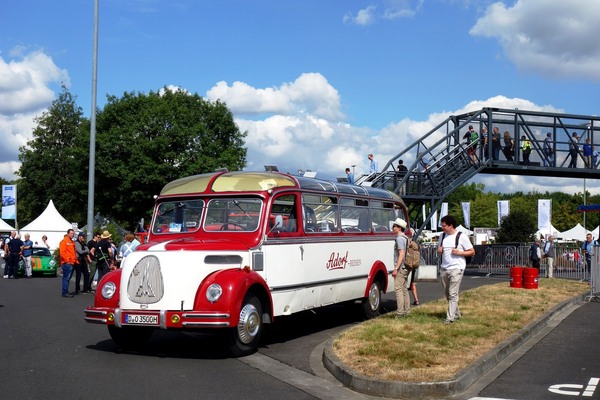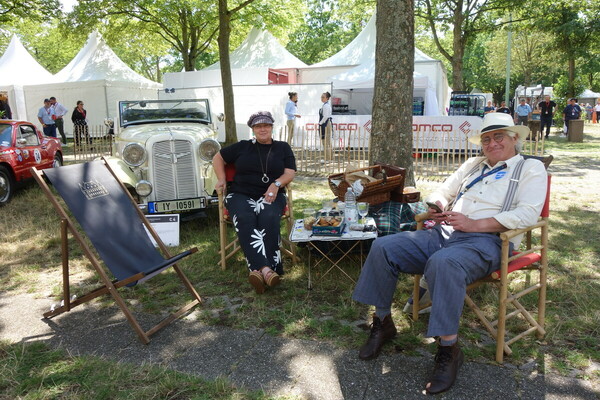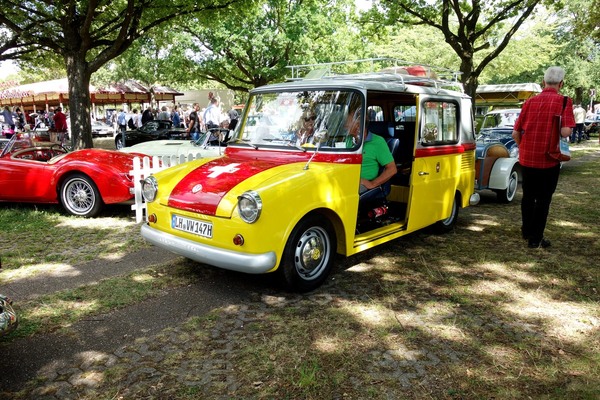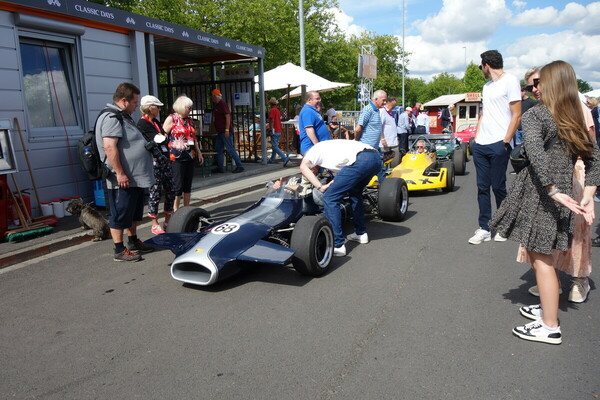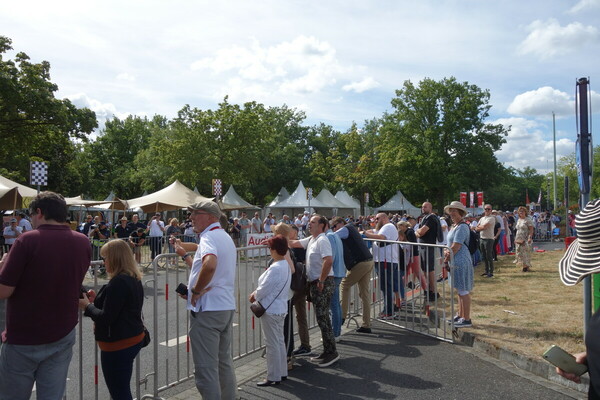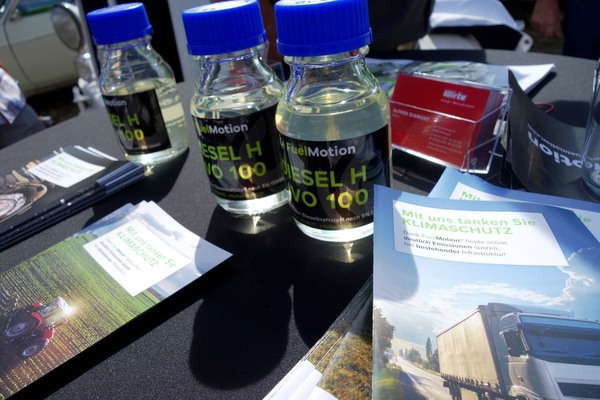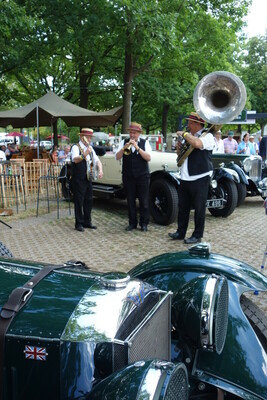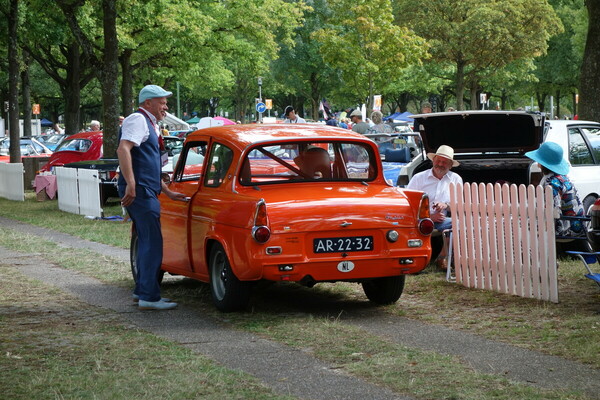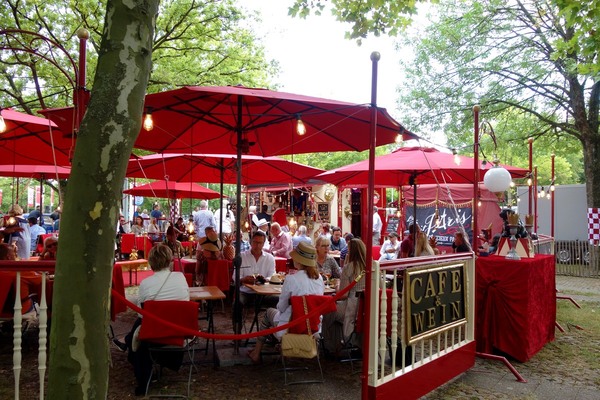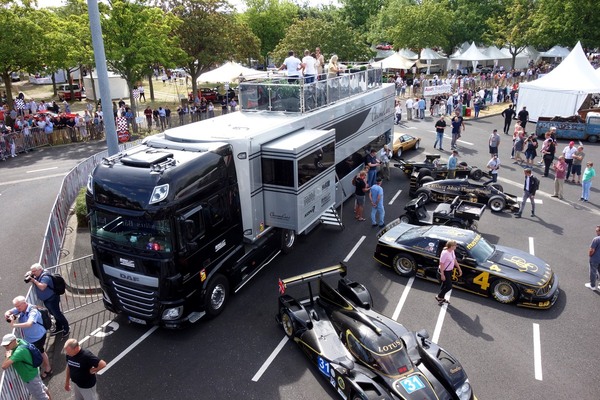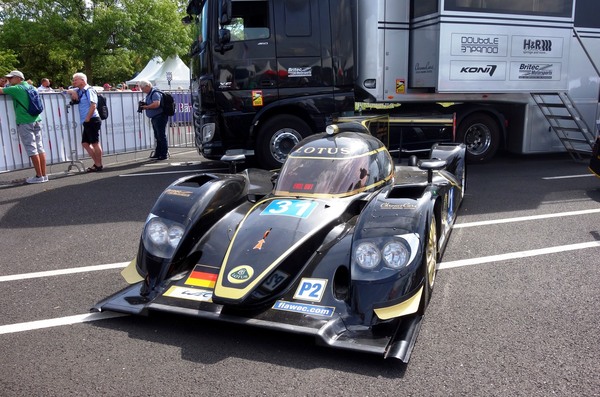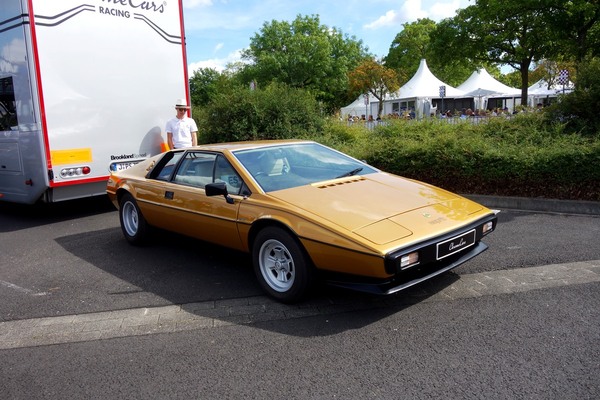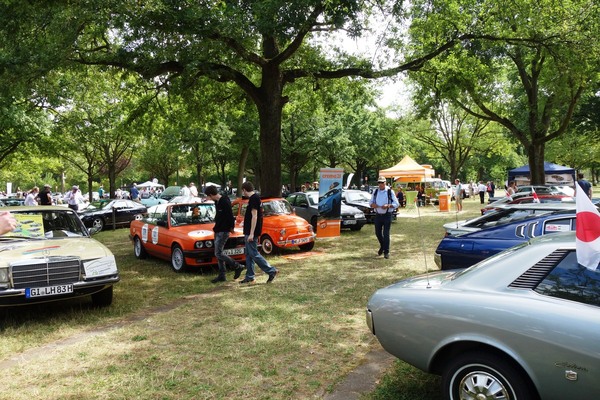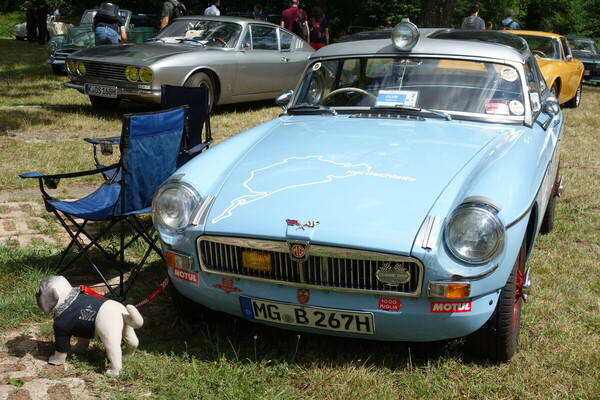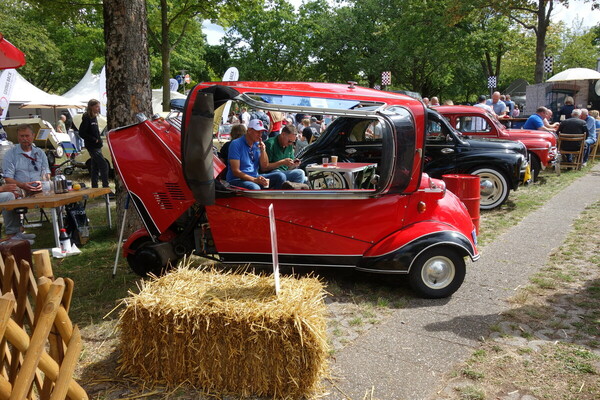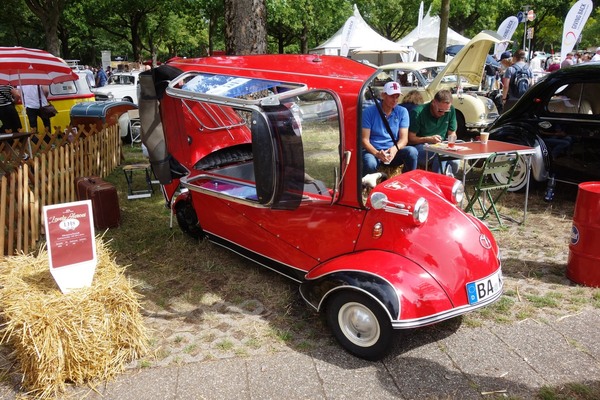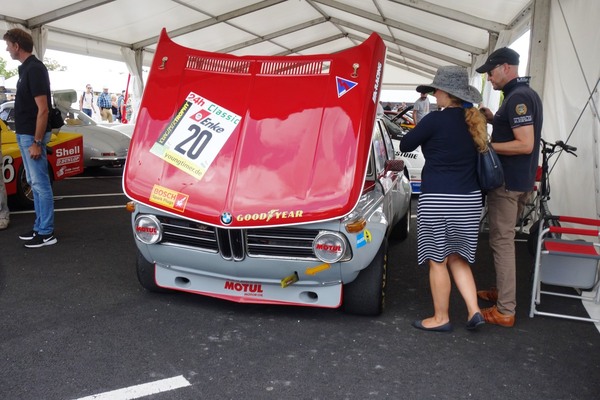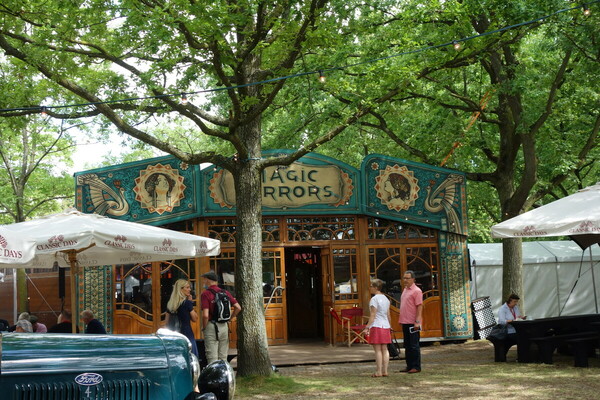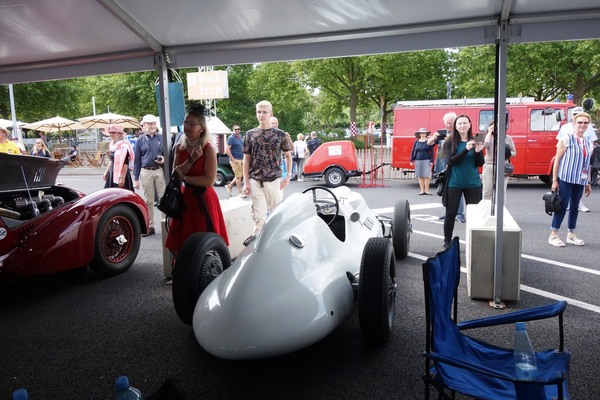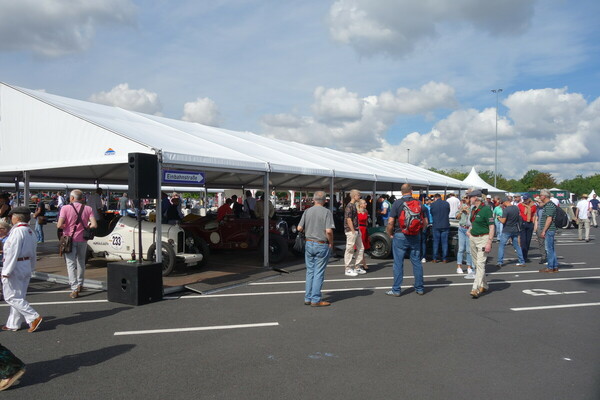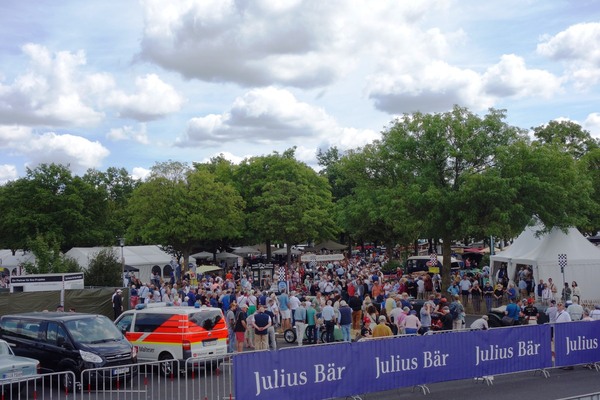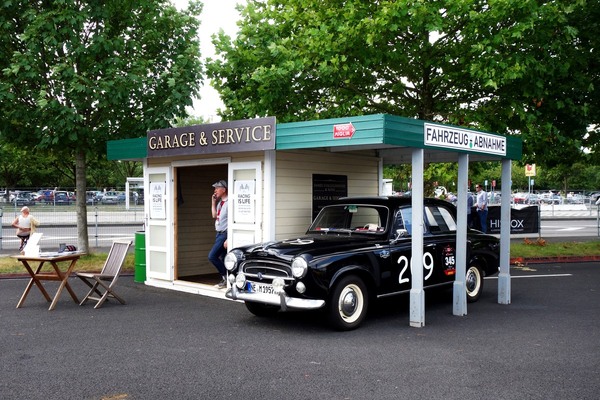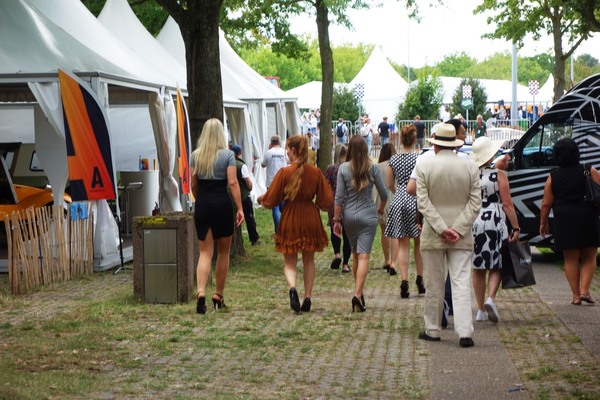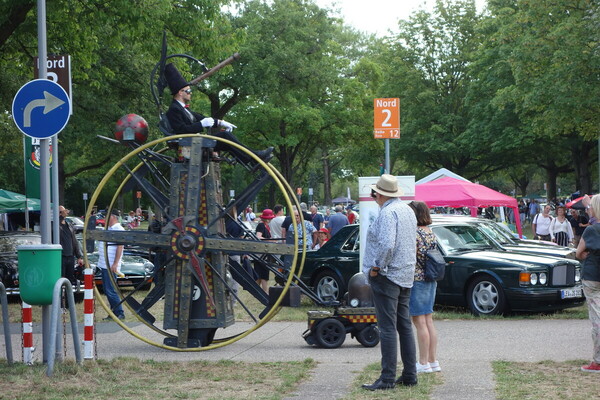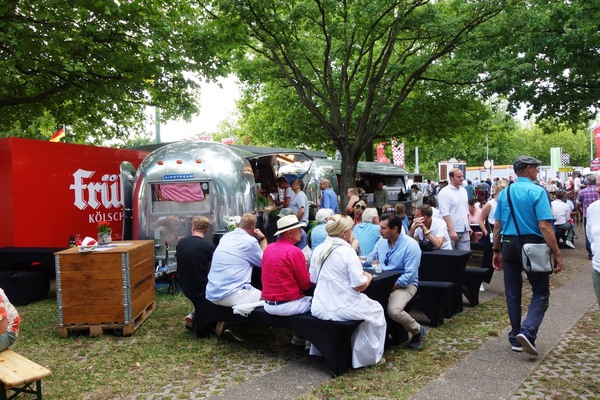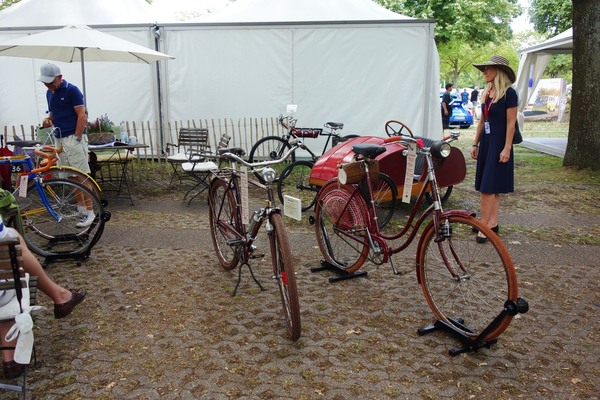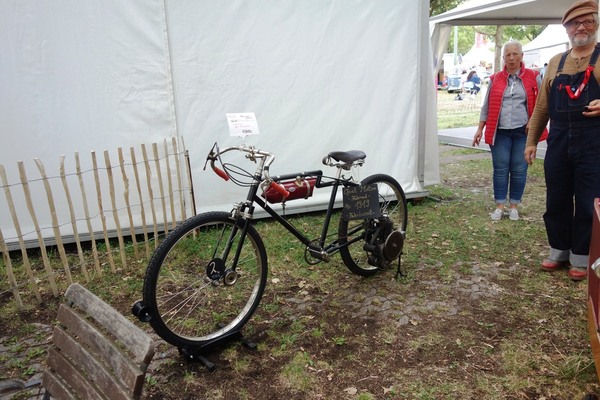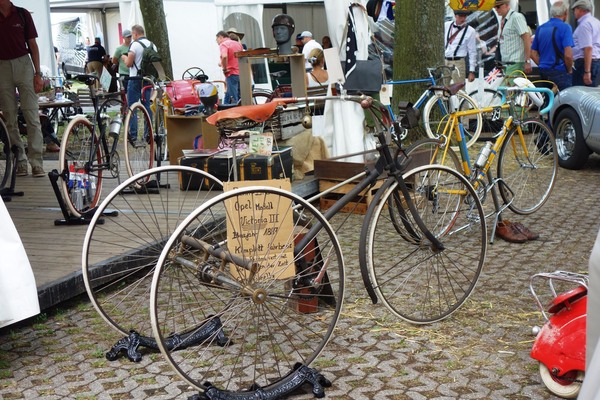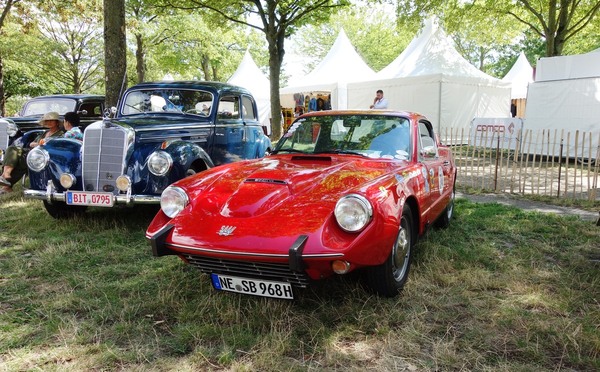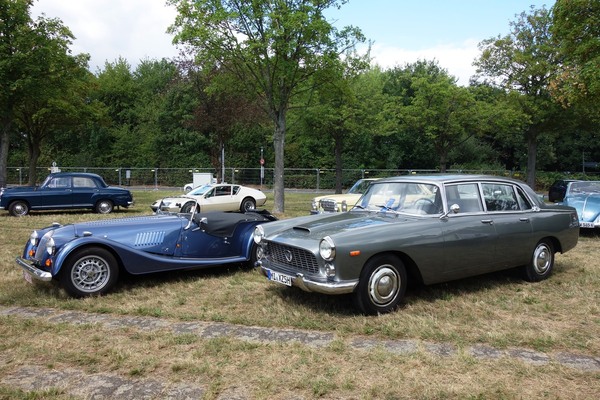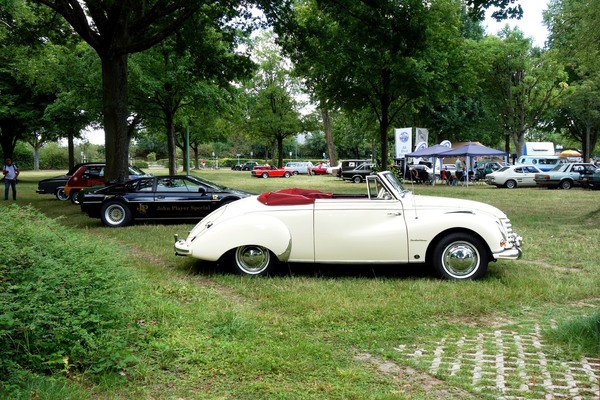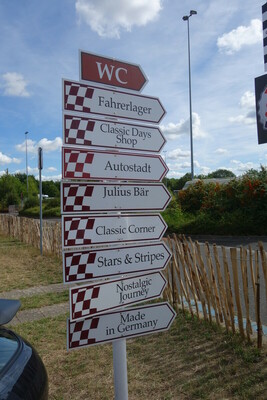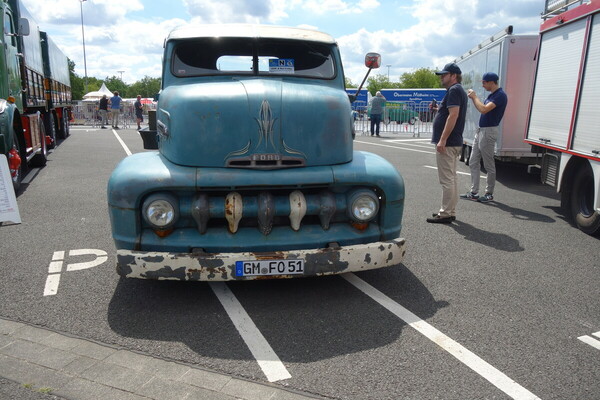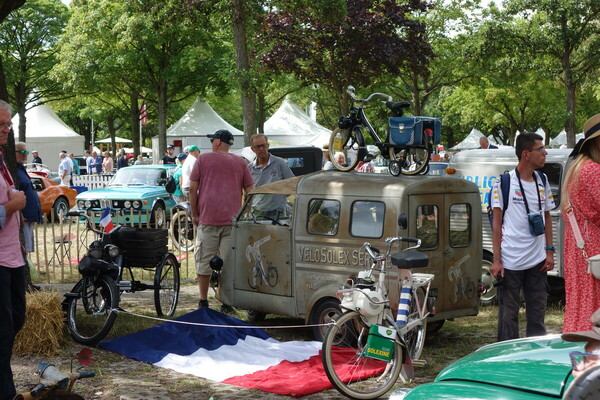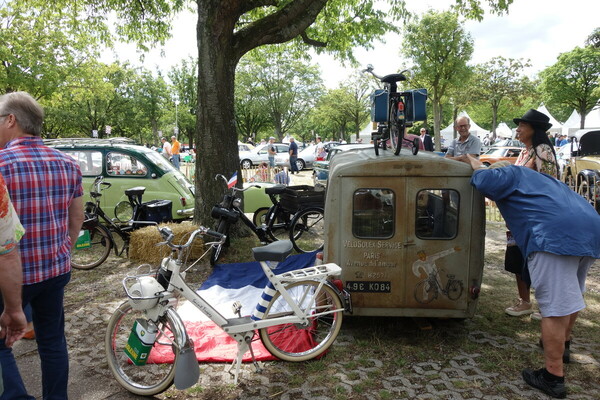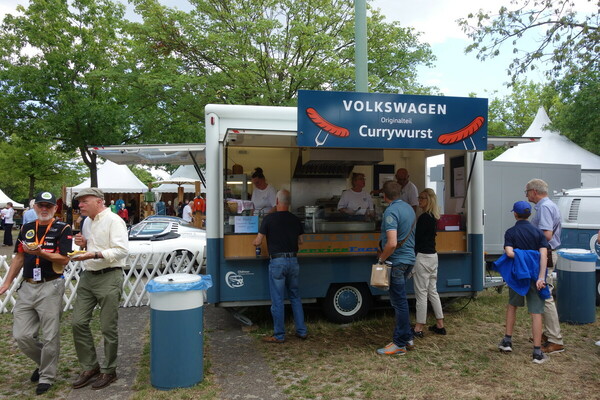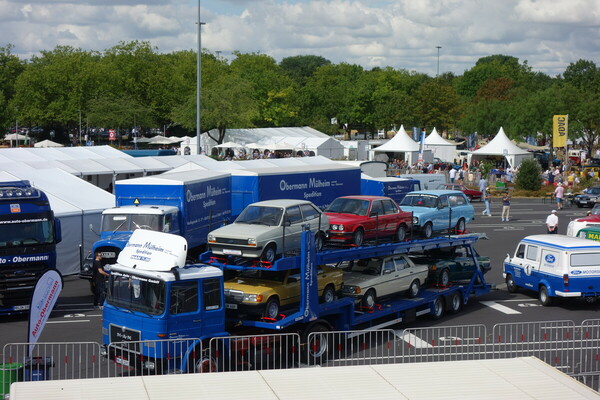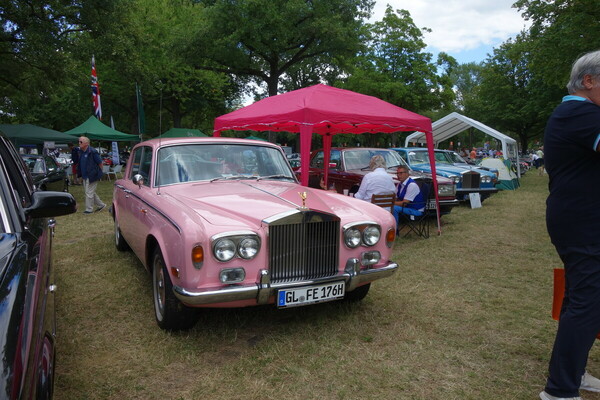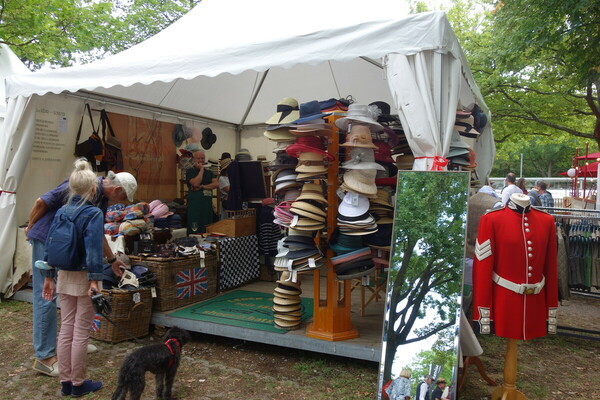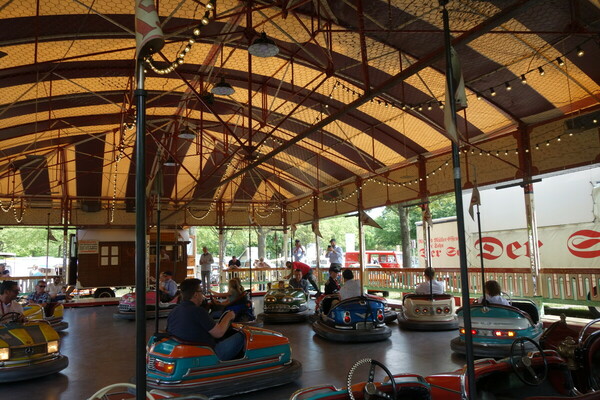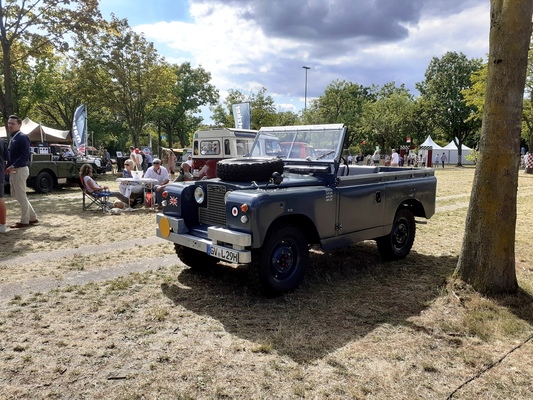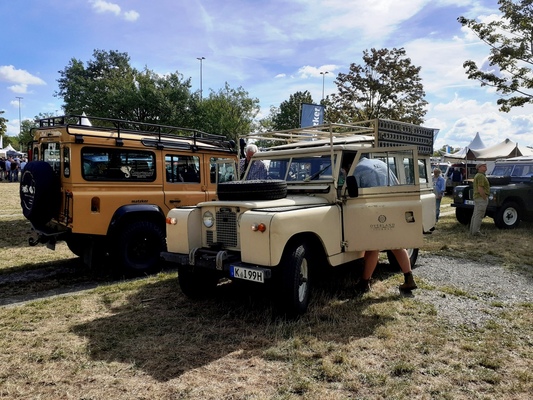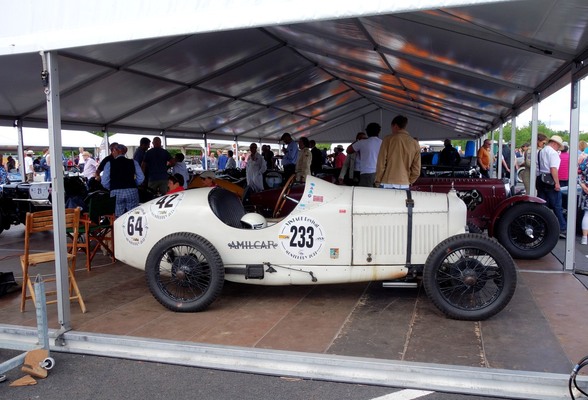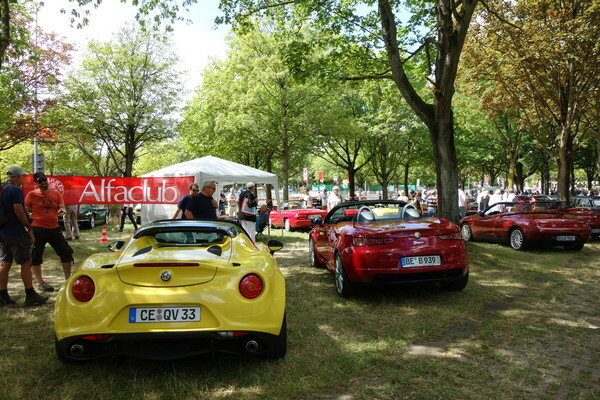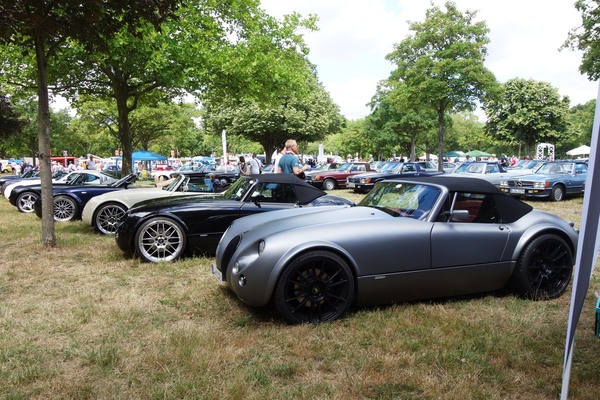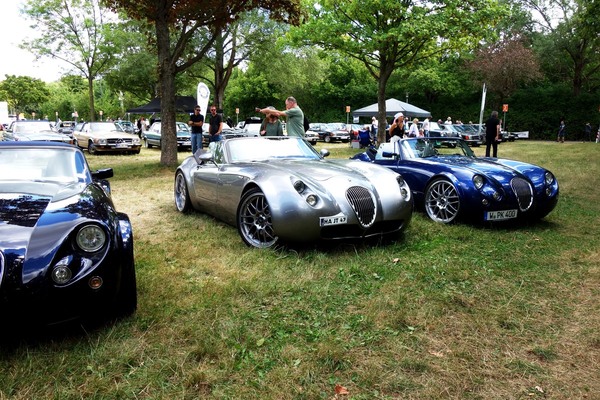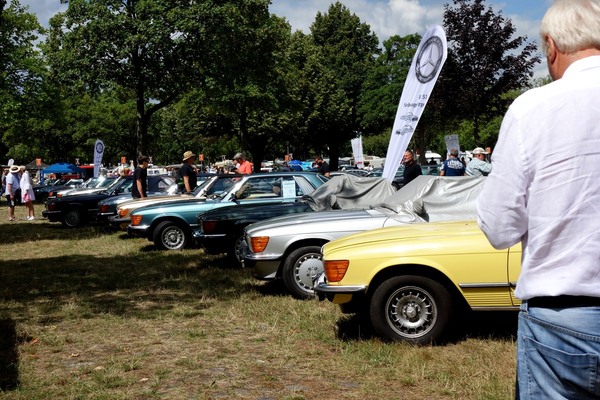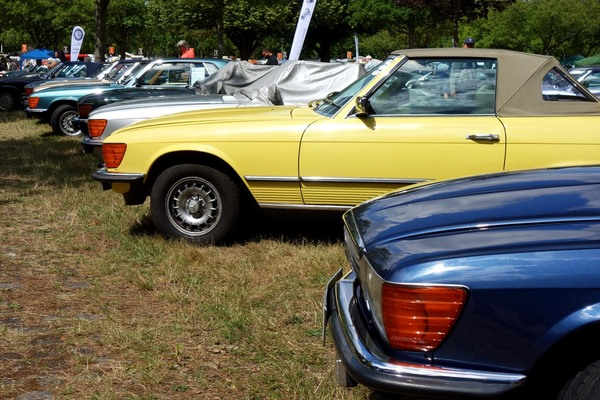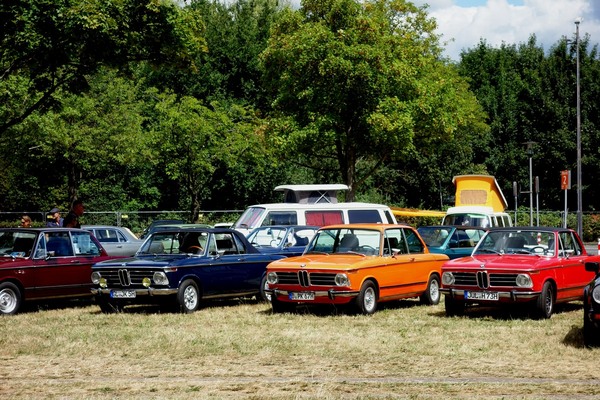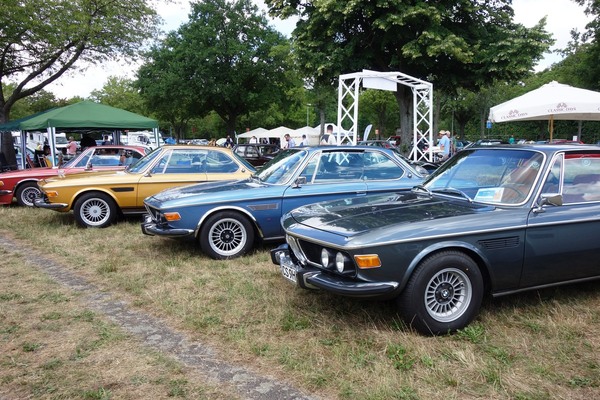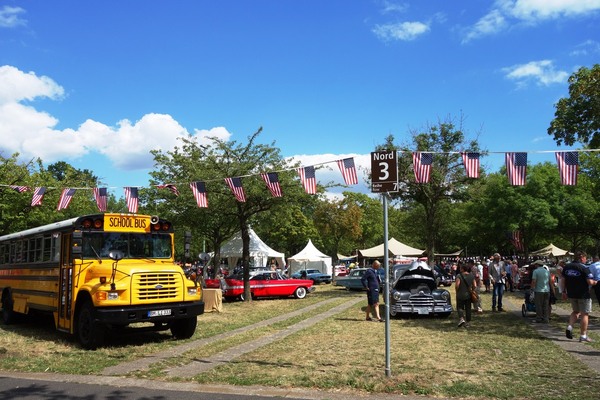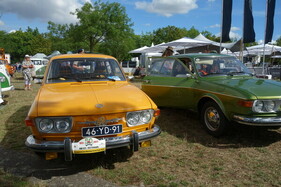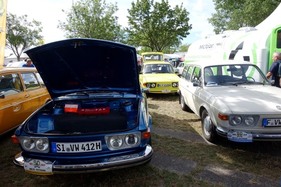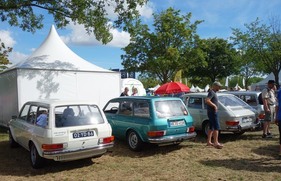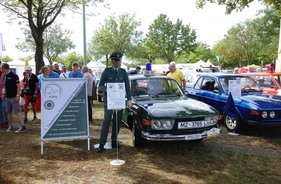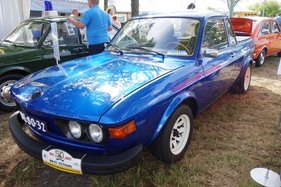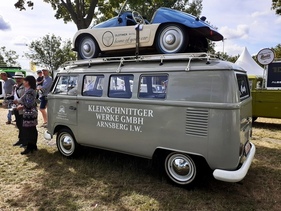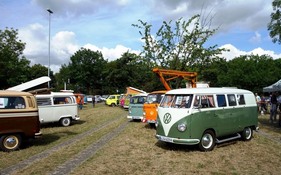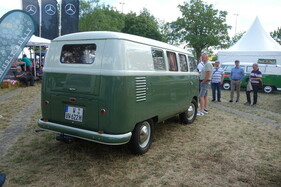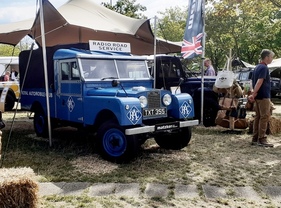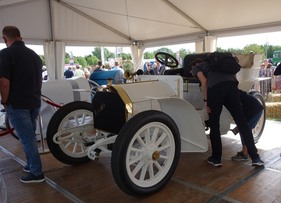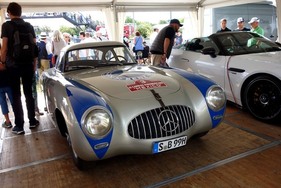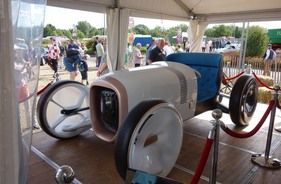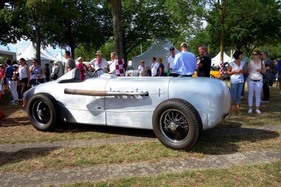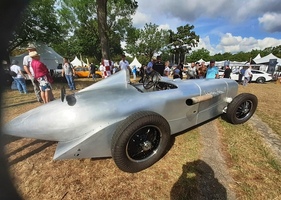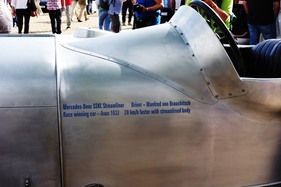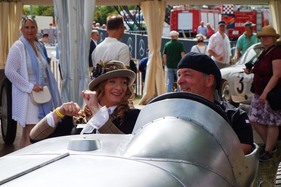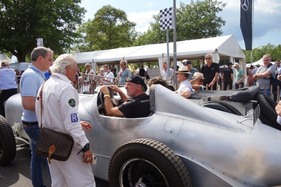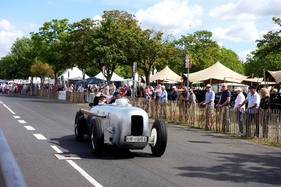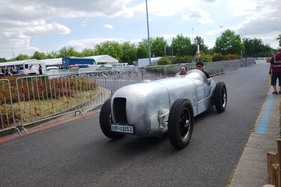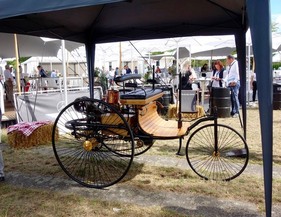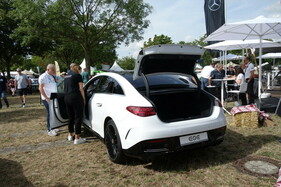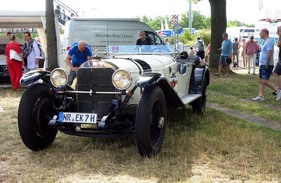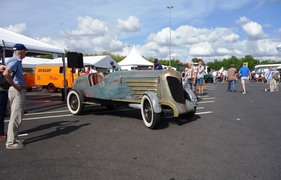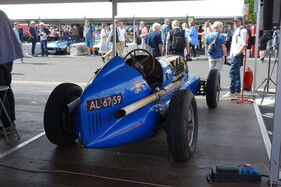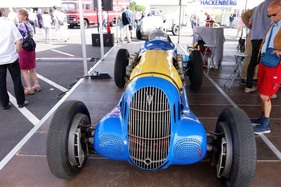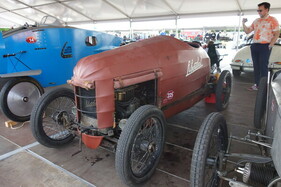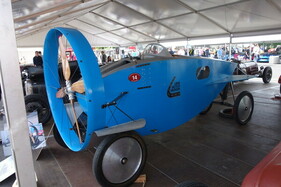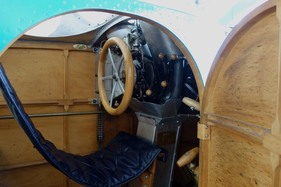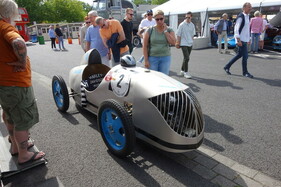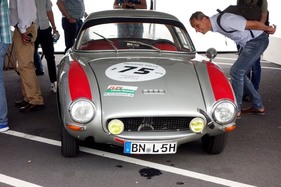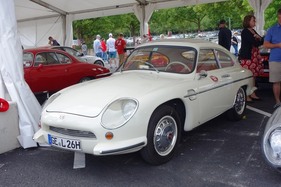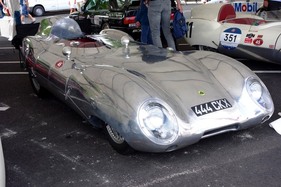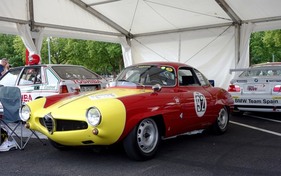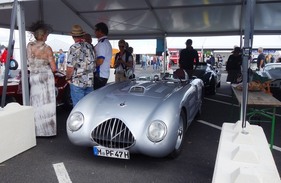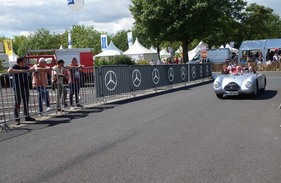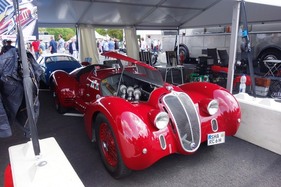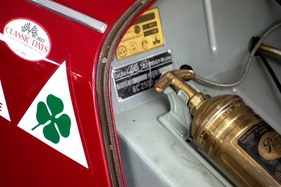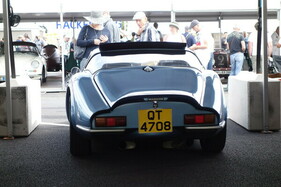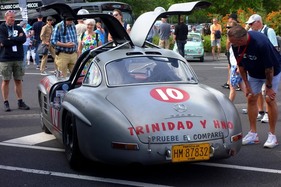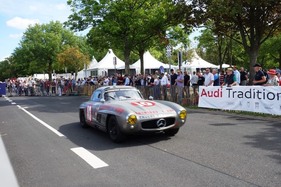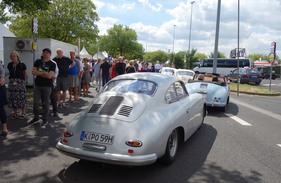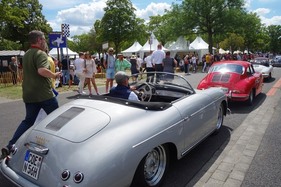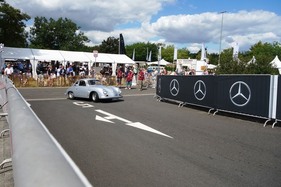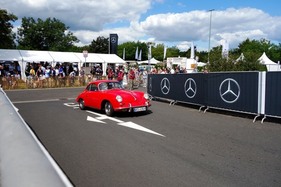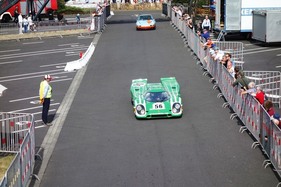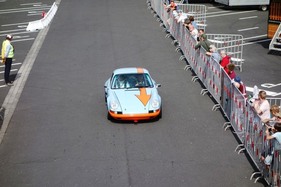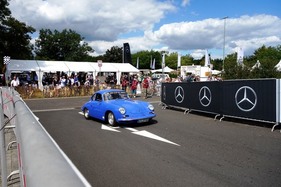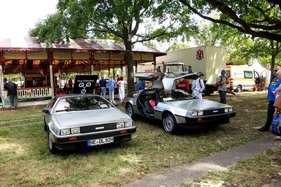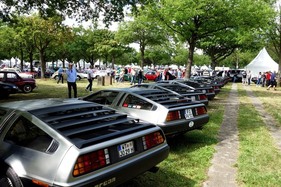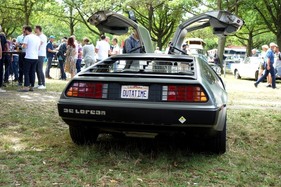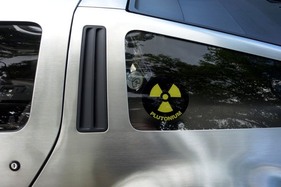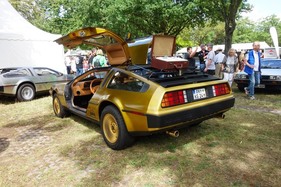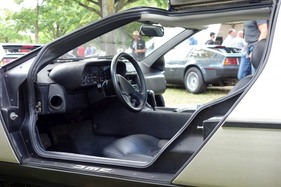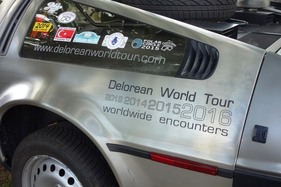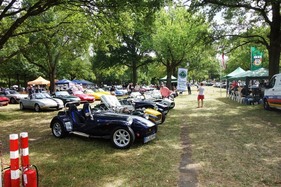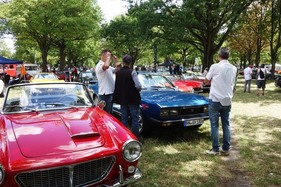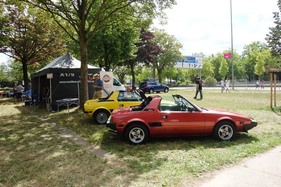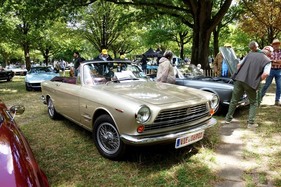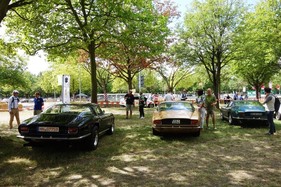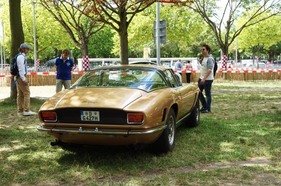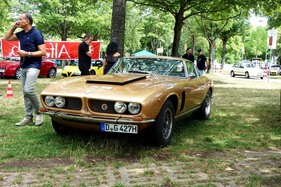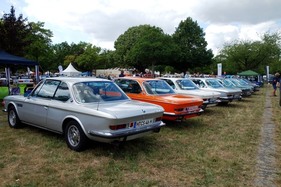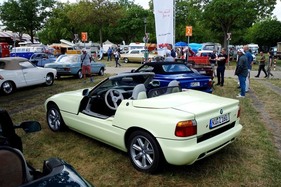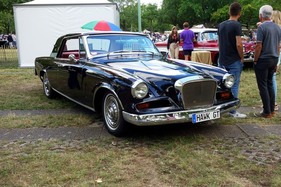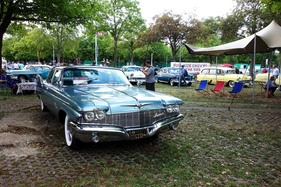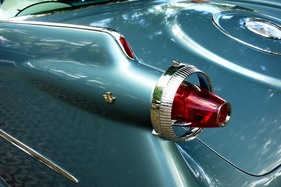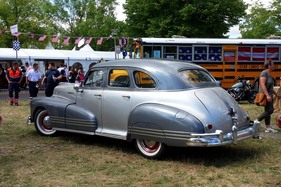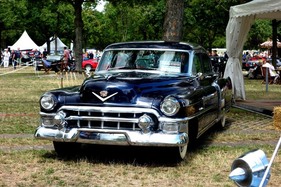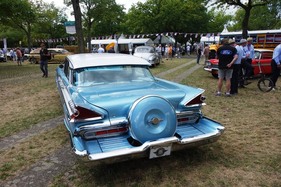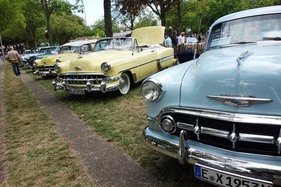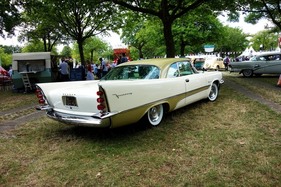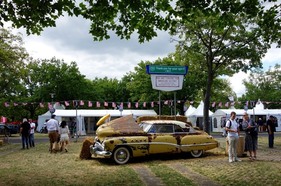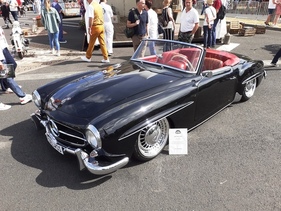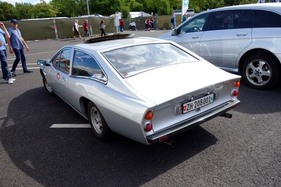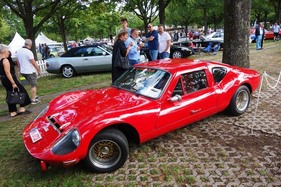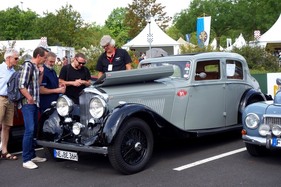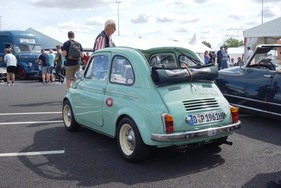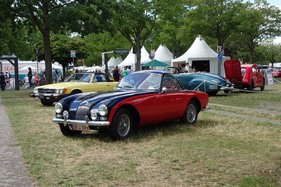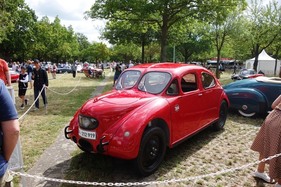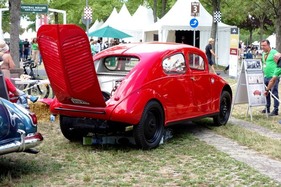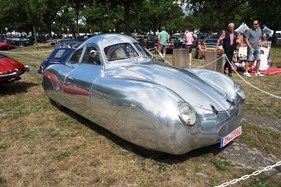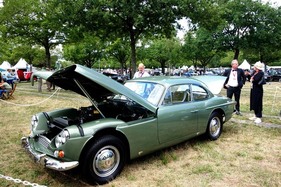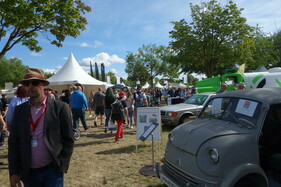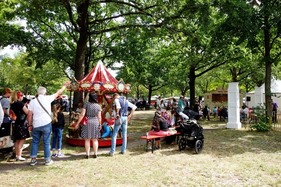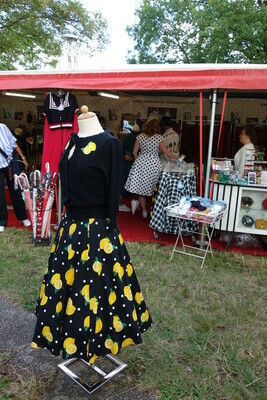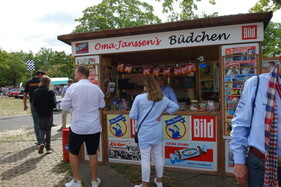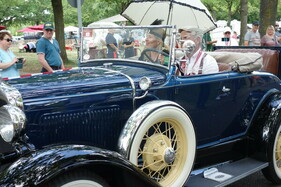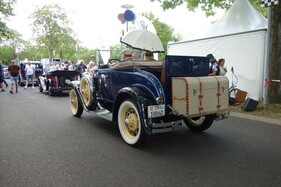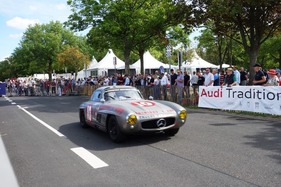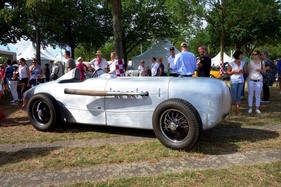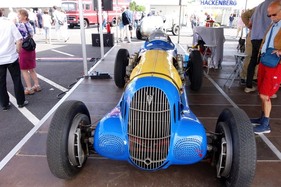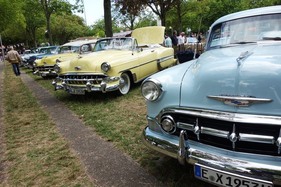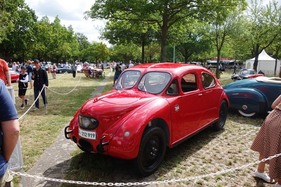After a forced break due to the coronavirus, the 15th Classic Days from August 5 to 7, 2022 no longer took place around the Dyck moated castle as in previous years, but was held as a "Green Park" on a 45,000 square meter park area at Messe Düsseldorf. At the time of our visit, the event was well frequented. With almost 35,000 visitors and over 4,000 classic cars in the visitor parking spaces, the organizer can also report a good result.
Park and square
Although most of the content has been retained, the event has changed fundamentally as a result of the move. Firstly, despite its size, the event has become more manageable and compact. The visitor parking areas and the actual event site are divided by the approximately two-kilometer-long circuit, which thus runs through the entire site like an axis. Compared to the previous situation, this has the advantage that the course can be seen from practically everywhere. This means there is no more jostling for particularly good photo spots. Even those arriving on their own were able to notice a significant improvement: The distances from the visitor parking lot to the entrance gate at the "Welcome Lane" were really not far. Incidentally, the departure was also completely problem-free, which is not a matter of course at such major events.
The actual festival site was divided into five sections, with only the paddock and the exhibition area for trucks and buses being purely asphalt surfaces. The remaining areas of the park were green. Of course, this is not comparable to a picturesque castle park with extensive lawns and parking areas as well as quiet inner courtyards. Now, the redesignation as a "Green Park" does not turn a trade fair parking lot into a garden landscape per se. But it is pointless to think about how much "park" may be contained in the word "parking lot". After all, it was astonishing how many mature and shady trees - according to one report, there were 1,500 of them - can ultimately contribute to a pleasant backdrop. On the other hand, the reporter found the constant aircraft noise disturbing, as the area is in the direct vicinity of Düsseldorf Airport, so that the planes cannot be overheard or overlooked on approach. However, the proximity to the city may be positive from the organizer's point of view, as it increases the catchment area of potential interested parties.
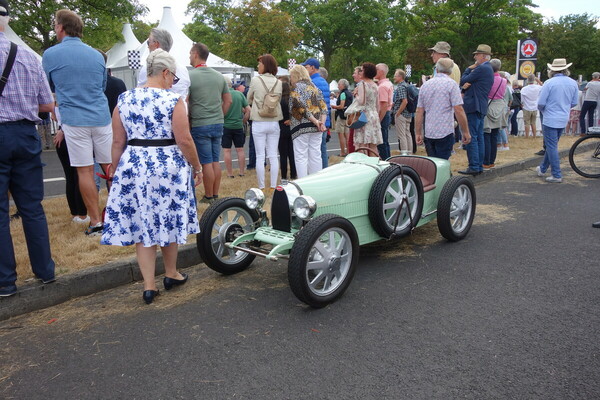
Many of the themes have been retained, such as the aforementioned paddock and the special "Stars and Stripes" exhibition for American cars. "Grandma Janssen's" lovable little stand was also still there. There were once again picnic areas and a band provided background music. A large area was still available for the automobile clubs. A new feature this time was the "Car Walk", where vehicles were presented and commented on - in analogy to the "Catwalk" in the fashion city of Düsseldorf. Childhood memories were brought back by the "self-driving car" (also known as a bumper car), which used to be a must at every fair. The fantasy figures that drove through the grounds were certainly also intended for children.
Pickles and currywurst
In view of the abundance on offer - but without claiming to be exhaustive - let's take a tour. Right at the start, the 50th "birthday" of the Volkswagen 412 was commemorated and a number of vehicles were presented, including the prototype of a 412 LS pick-up. VW buses in all their varieties were on display in the vicinity. Mercedes-Benz exhibits included a replica of the SSKL streamlined racing car (popularly known as "the cucumber"), in which Manfred von Brauchitsch won at the AVUS in 1932. A Mercedes Simplex 40 PS from 1902 was juxtaposed with the futuristic "Vision Simplex" from 2019 - an attractive contrast.
Two pedestrian bridges led to the "Racing Legends" and the paddock, where there were once again a few surprises. For example, you could discover a Volpi Cadillac V-16, the "Neander driving machine" of the multi-talented Ernst Neumann-Neander or the replica of the propeller-driven car Leyat Hélica. And of course there were racing cars from Amilcar, Alfa Romeo, Lotus and Veritas, which you could experience first during the warm-up and then on the track. Derek Bell, Jochen Mass and Kurt Ahrens were among the celebrity racing drivers in attendance.
The relevant trade could be found in the central area 4 ("Central Square"). So if you wanted to buy nostalgic clothing or a Panama hat, you had ample opportunity to do so. This was also a focal point of the accompanying gastronomy. In this context, it should be mentioned in passing that, despite all prophecies of doom, the original "VW Currywurst" spare part was still available. The aforementioned "Car Walk" was located between areas 4 and 3 - certainly an asset.
Heavy metal and lightweight construction
In the "Stars and Stripes" segment of area 3, visitors were greeted by a typical yellow American school bus and massive road cruisers. Various Cadillacs, Chevrolets and a Pontiac Torpedo could be found here, as well as a Dodge Viper. The DeLorean meeting took place on the opposite side. Around 30 of the gullwing cars had arrived, most of which could also be seen on the circuit. Remarkably, two DeLoreans were painted.
In the middle of area 3 was the prize-free competition labeled "Masterpieces". Unfortunately, the presentation of the vehicles did not correspond to what we were used to in previous years at the Concours in the Orangerie. The vehicles seemed to the reporter to be placed rather casually, and there were no explanatory signs. This is regrettable, because apart from two Jensen vehicles, a reconstruction of the Porsche Type 64 Berlin-Rome car, a gold-colored Peerless GT shone in the sun. There is certainly room for improvement in this segment. In the neighborhood, however, the prototype of a "lightweight people's car" from the 1930s by Eugen Maier could be inspected from all sides.
Finally, field 2 was occupied by the brand clubs. Even if one mourns the former "Miscanthusfeld" in Jüchen a little, it is always a beautiful sight to see several examples of one type in a multi-colored row - regardless of whether they are cars from MG, Lotus, Fiat, Alfa Romeo, BMW, Mercedes-Benz, Porsche or Iso.
Conclusion
Even in its current form, the Classic Days were well received by the public. For three days, a wide range of automotive culture was on offer, which made the event interesting not least for families. However, due to the move to Düsseldorf, the Classic Days now seem to have the character of a folk festival rather than a large garden party.
